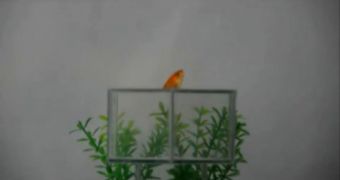The ability to become invisible has long been a dream of humankind, along with unassisted flight and invulnerability, not to mention super strength and all the other standard superpowers.
Genetics is a long way from providing us with any of those abilities, assuming it can actually enable them.
So, in the meanwhile, technicians are looking into equipment that can create those effects instead. Invisibility cloaks are farther along than other endeavors.
Case in point, researchers from Nanyang Technological University in Singapore, Zhejiang University in China, and some people from institutions in Boston and the UK have revealed a hexagonal cloak.
Calling it a cloak might be stretching it, but that's the term everyone is going with, so we'll do the same.
The invention is actually a rectangular or hexagonal container that can hide items from view, so long as people are looking directly at one of the panels.
Both the rectangular and hexagonal containers are made of thin glass that bends light from one flat side to the other.
One of the problems that makes the cloak imperfect is the dried glue holding the glass together.
It is also unclear how easy or hard it would be to expand the cloak in a way that would let it conceal objects at more angles.
It's also worth noting that the view in the invisibility cloak differs a bit from what it would look like normally. The scientists are confident that humans shouldn't be able to distinguish those small changes though.
That's actually the reason why they feel their invention already has potential practical applications. As long as the angle is just right, the cloak can supposedly be included in security and surveillance systems.
“A cloak that can hide living creatures from sight is a common feature of mythology but still remains unrealized as a practical device. [Our cloak design can] be made in large scale using commonly available materials and we successfully report cloaking living creatures, a cat and a fish, in front of human eyes,” the scientists explain.

 14 DAY TRIAL //
14 DAY TRIAL //